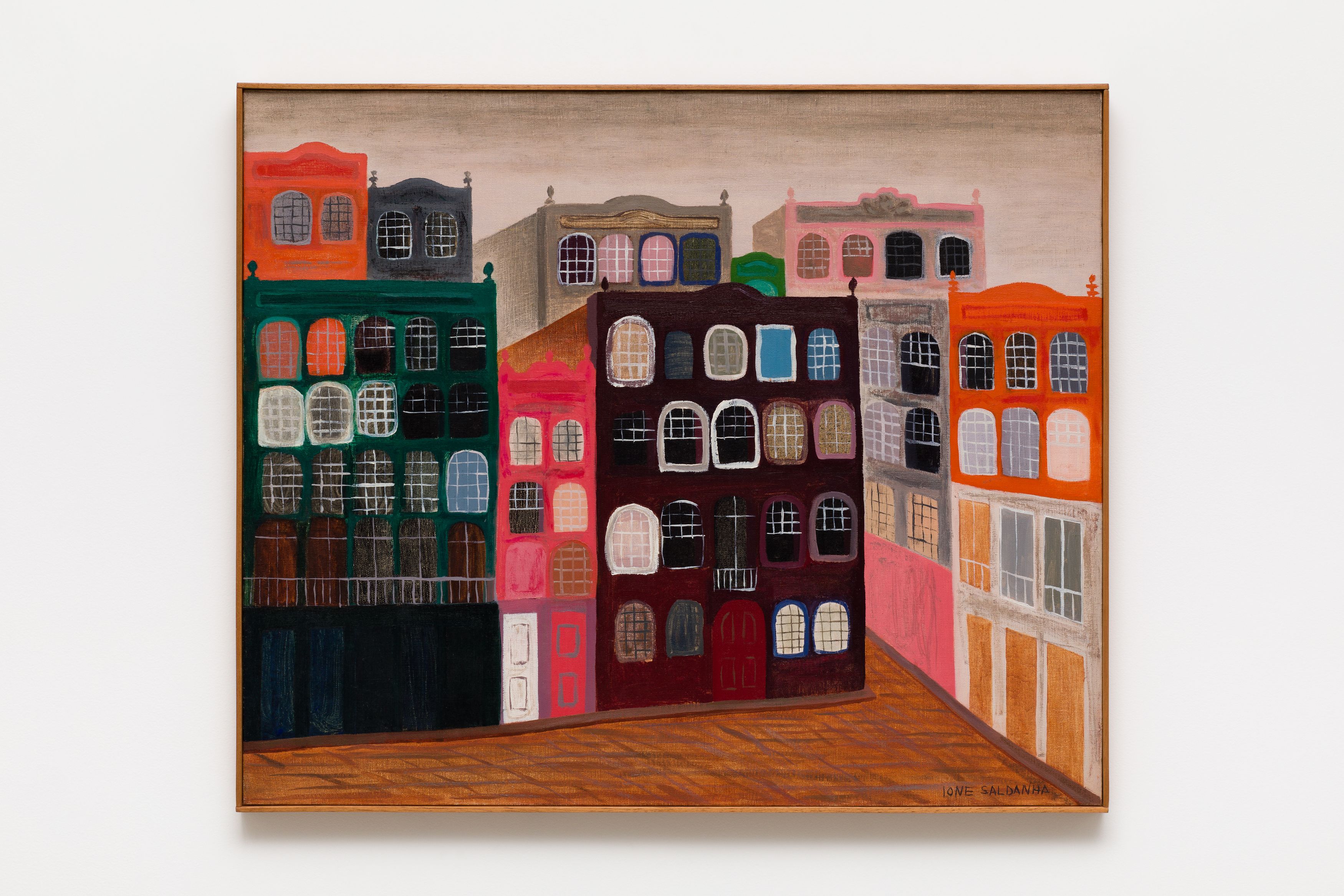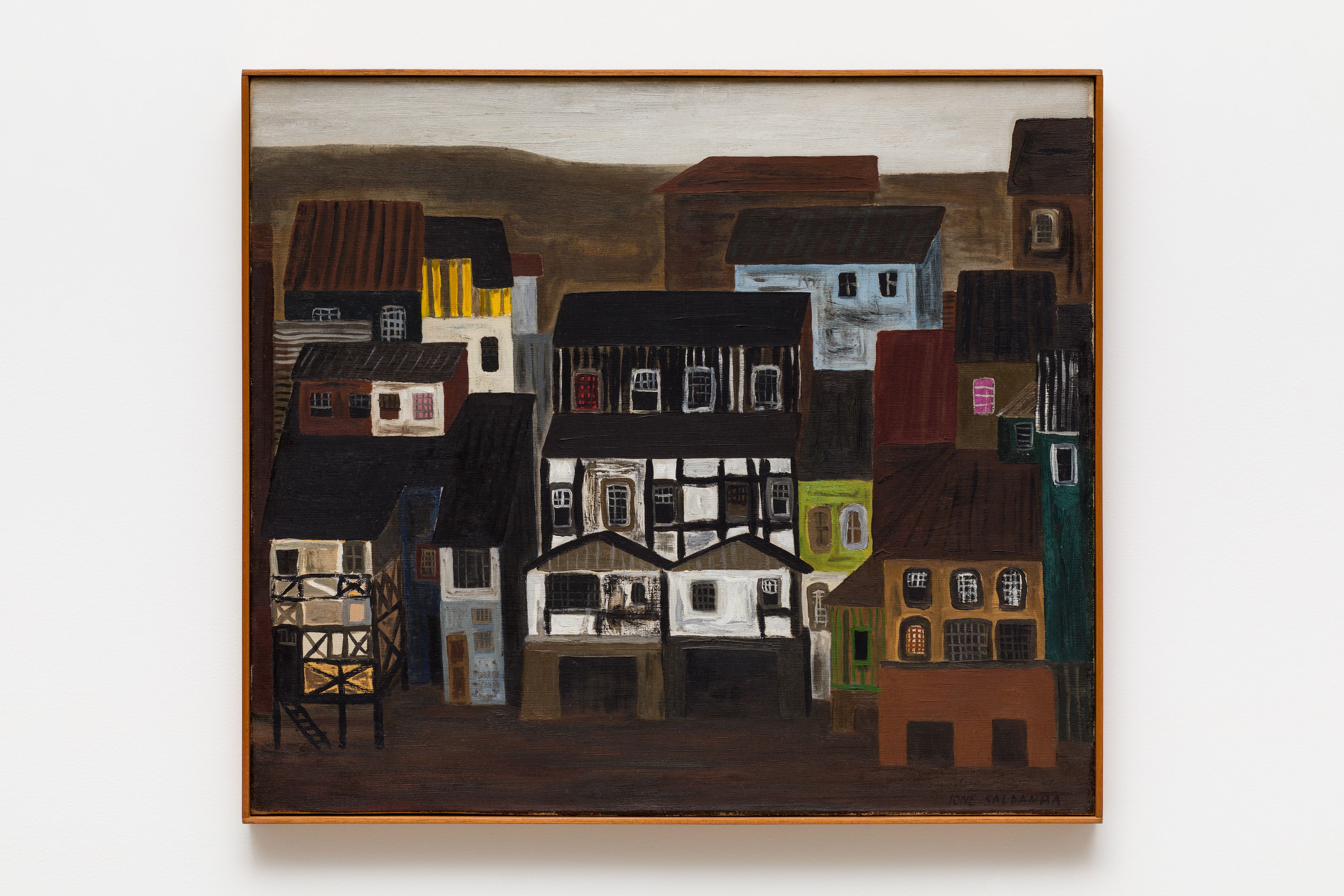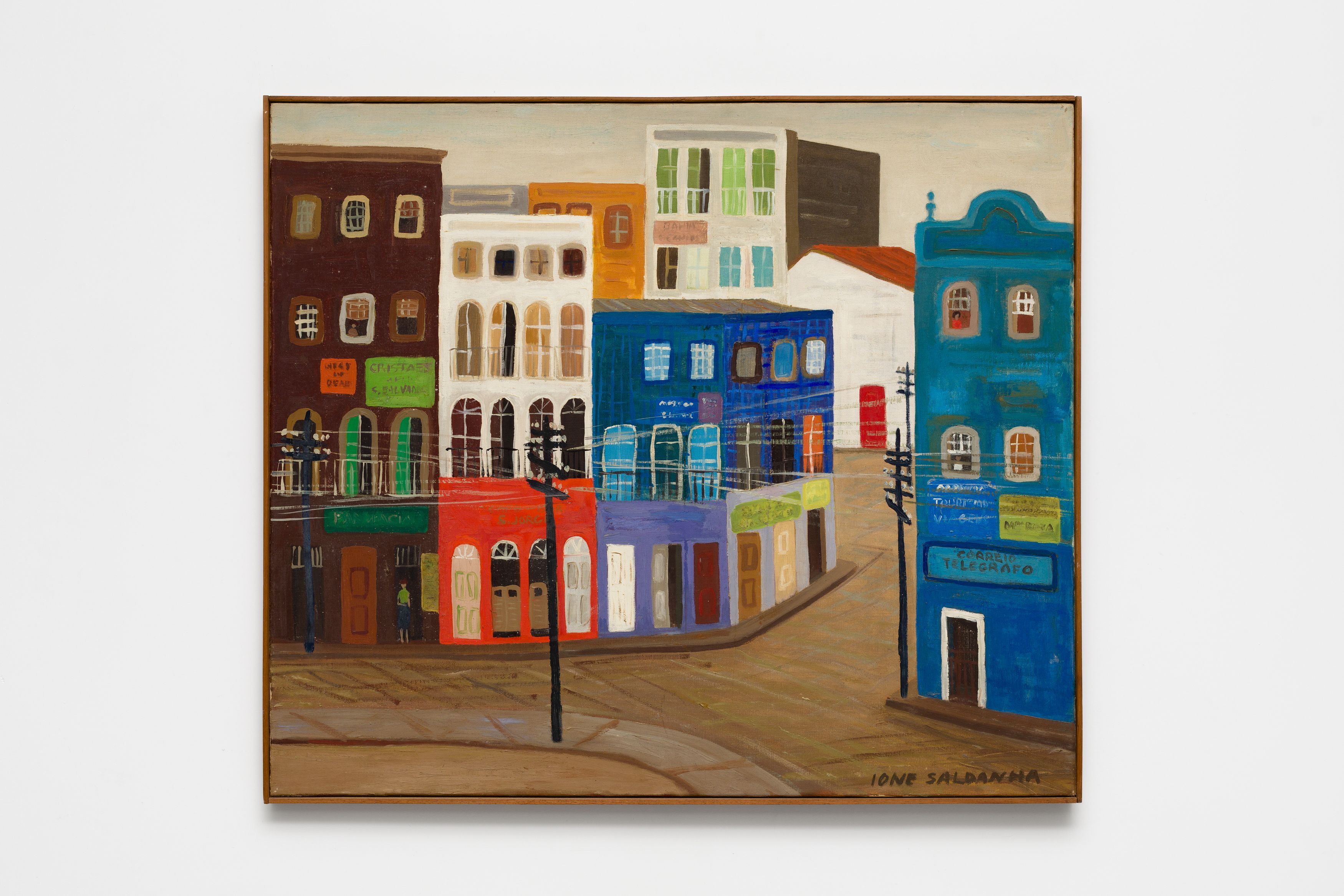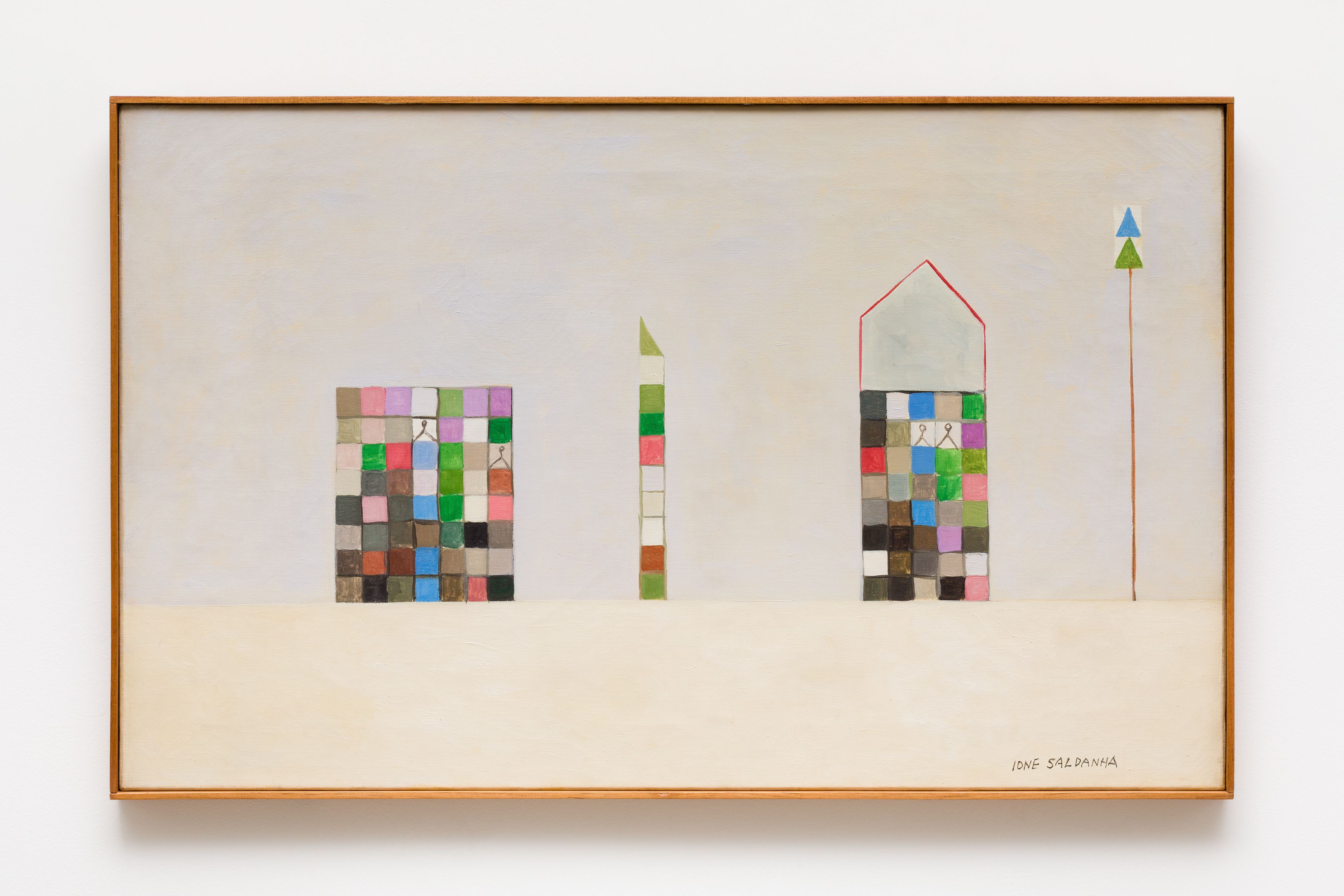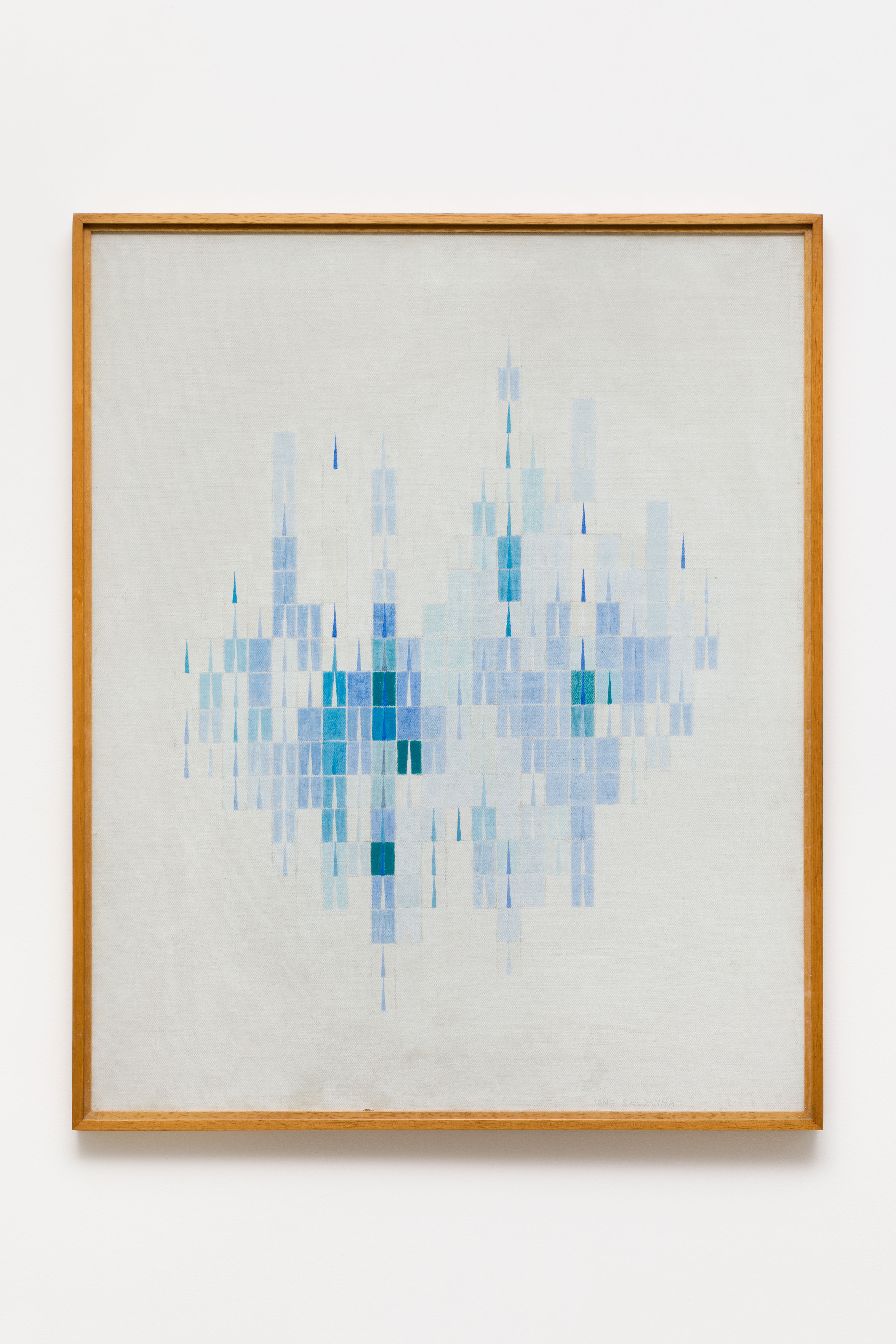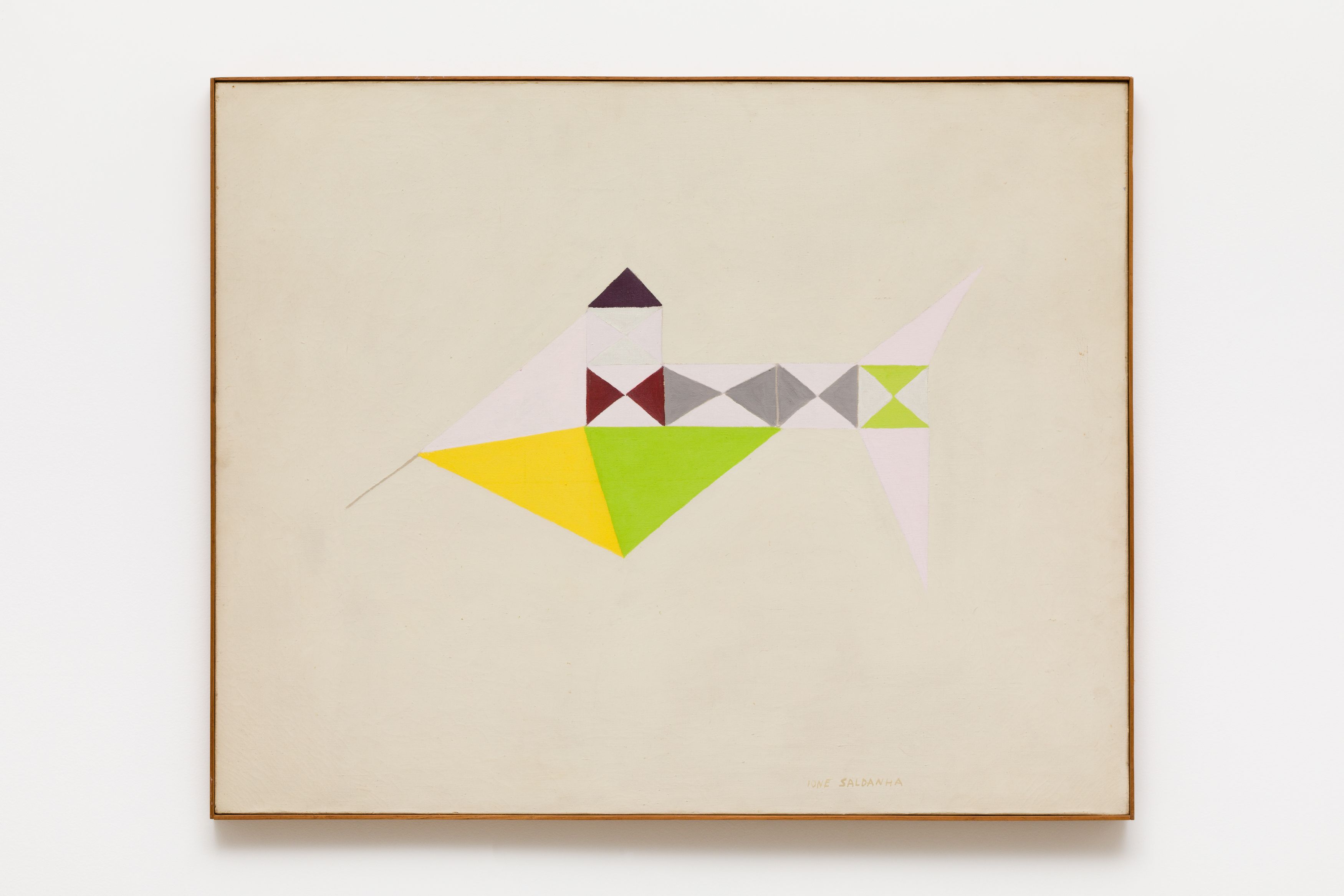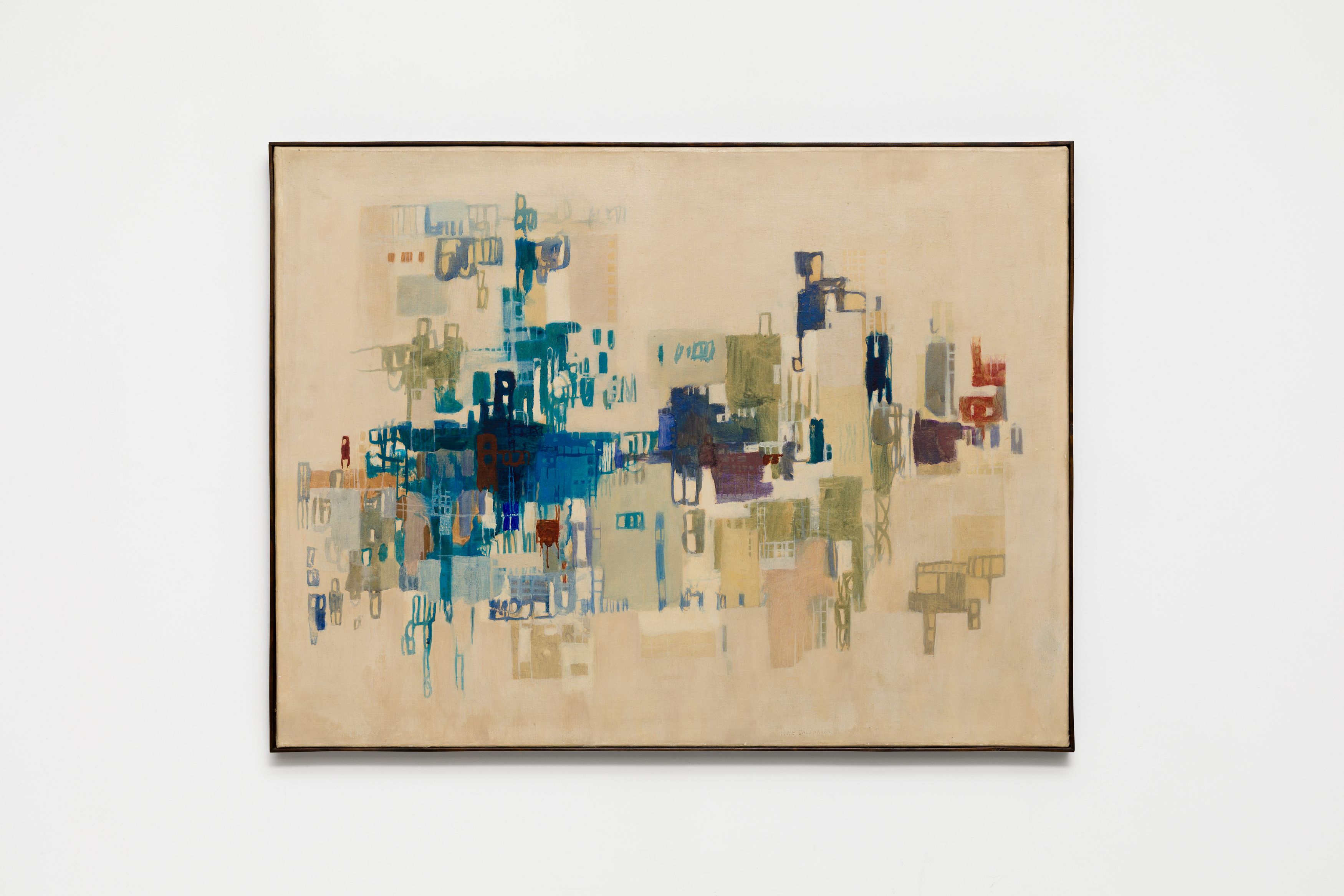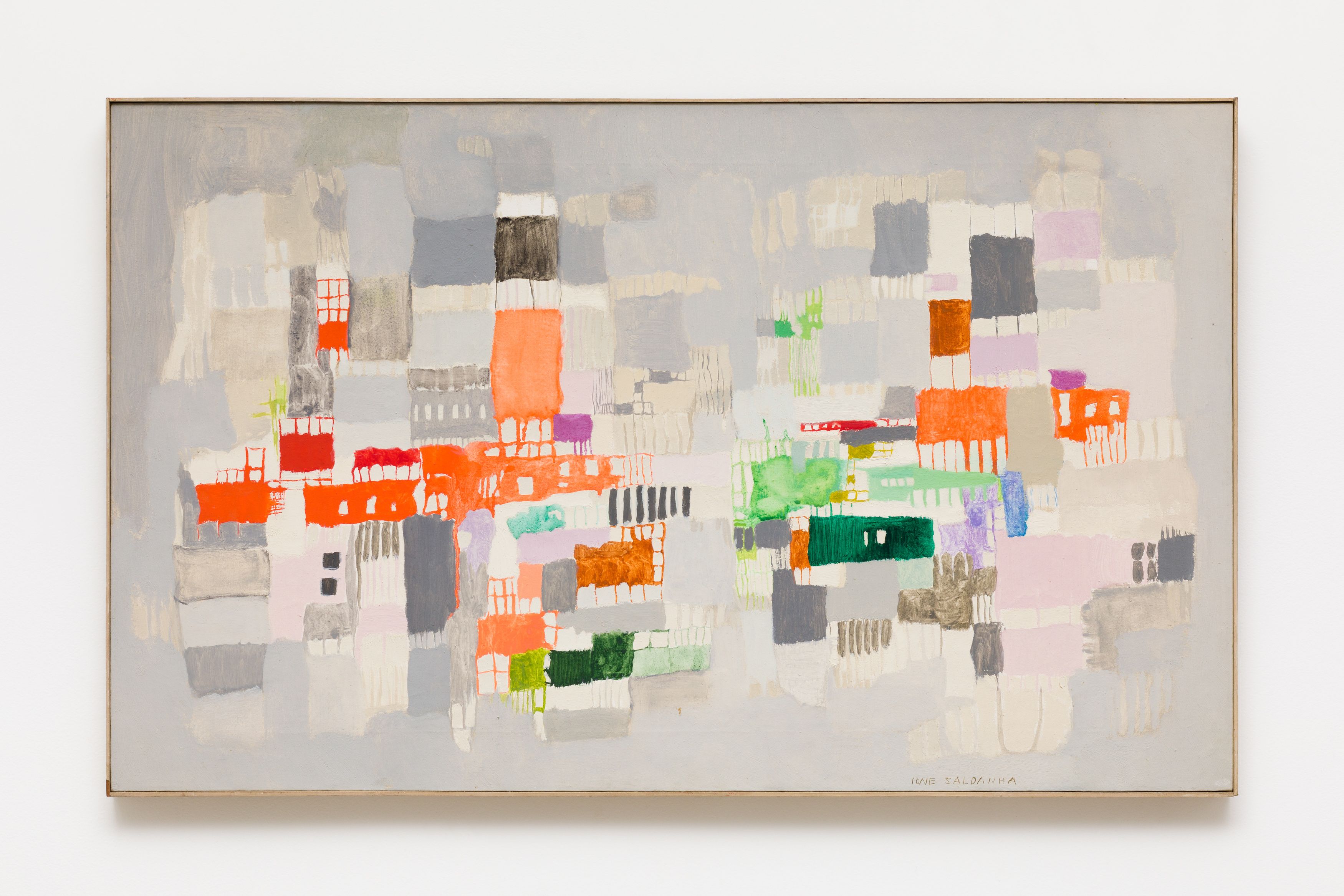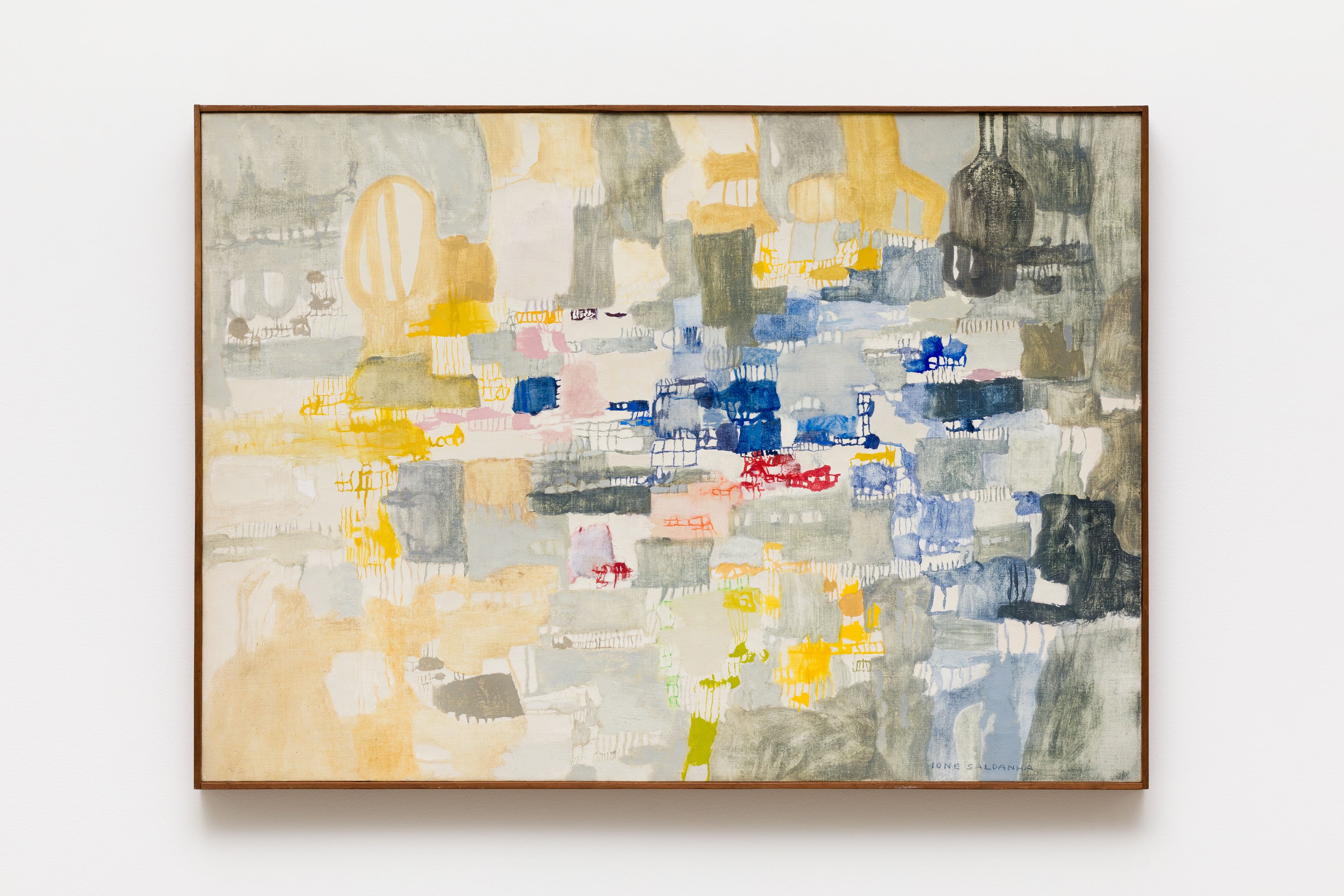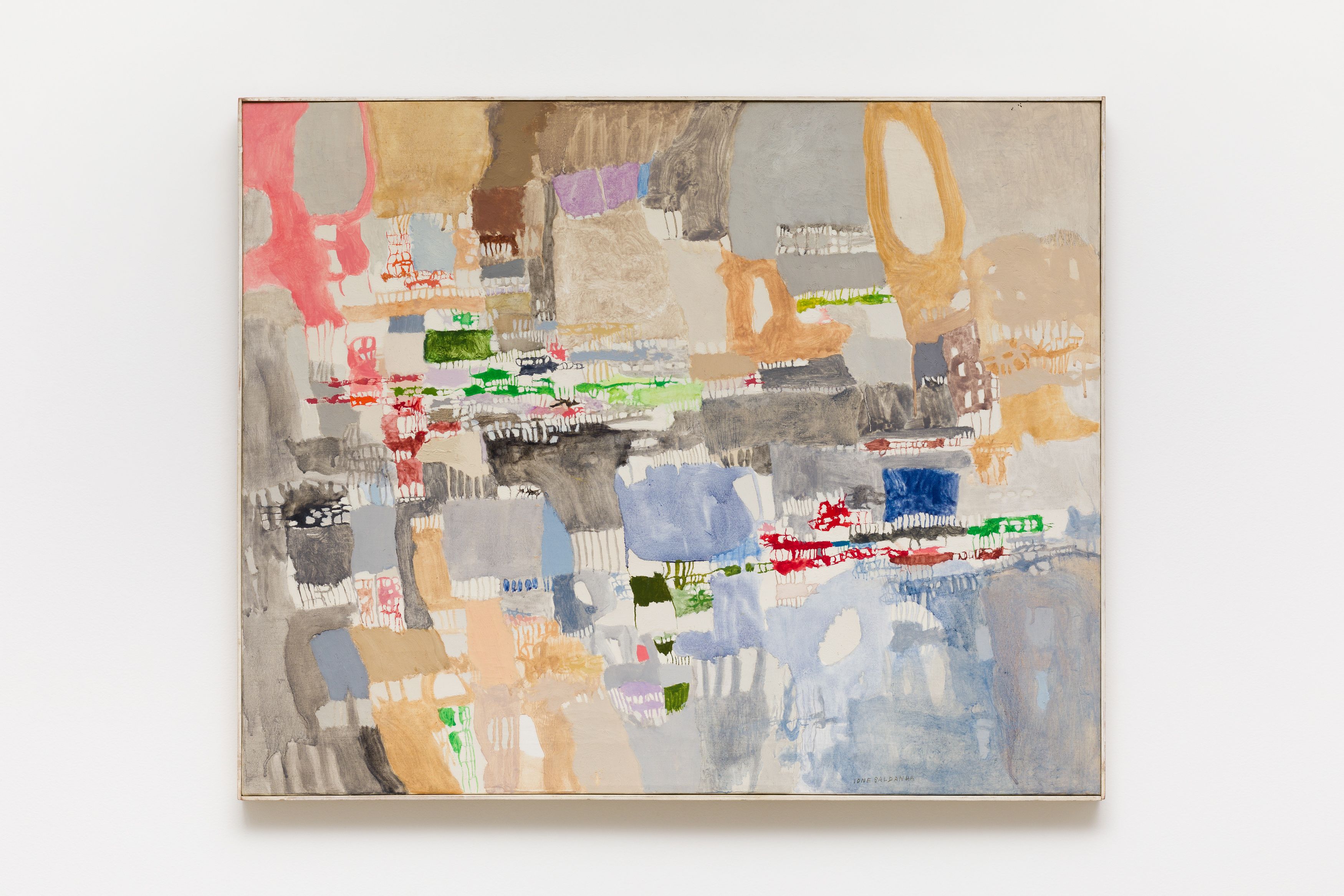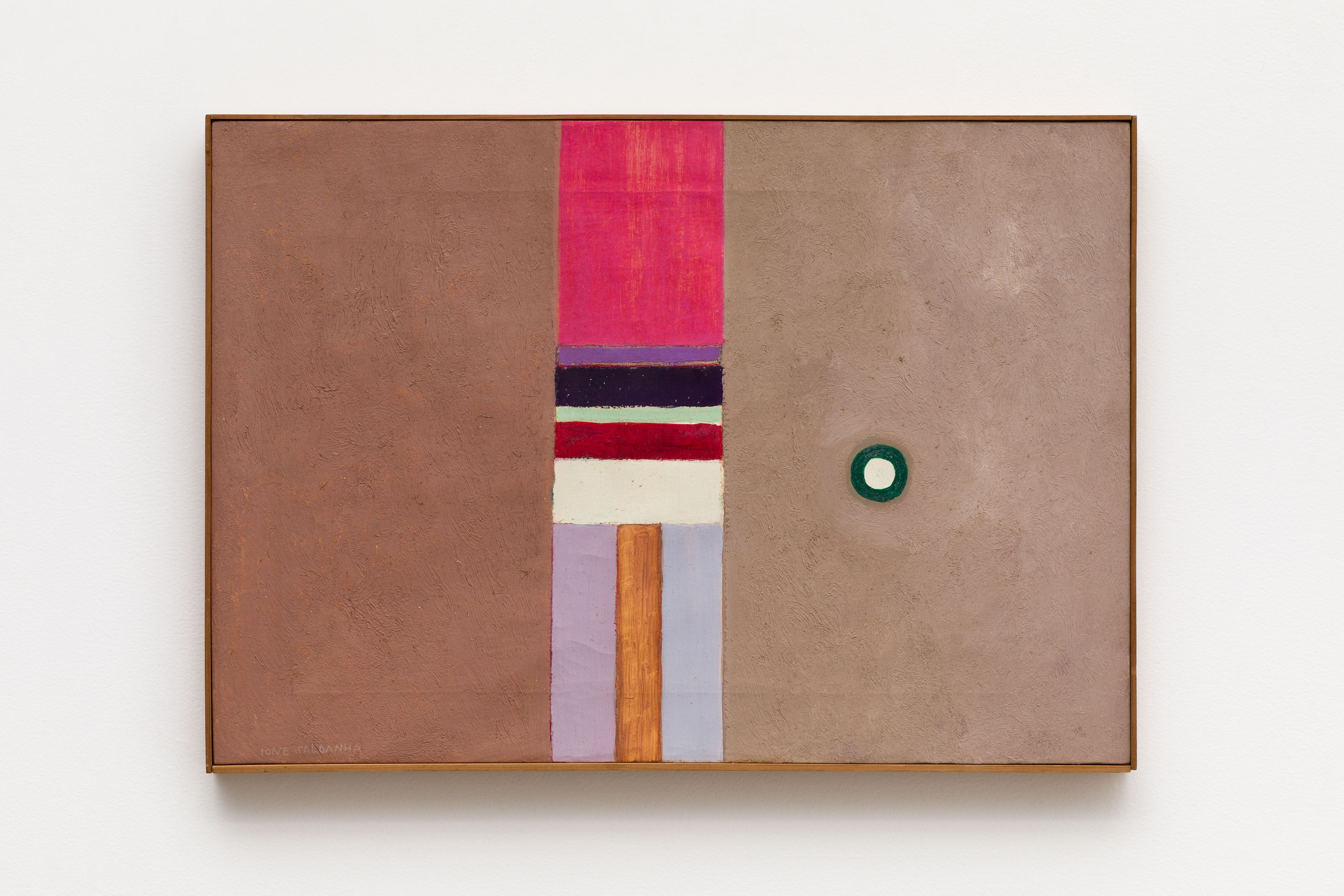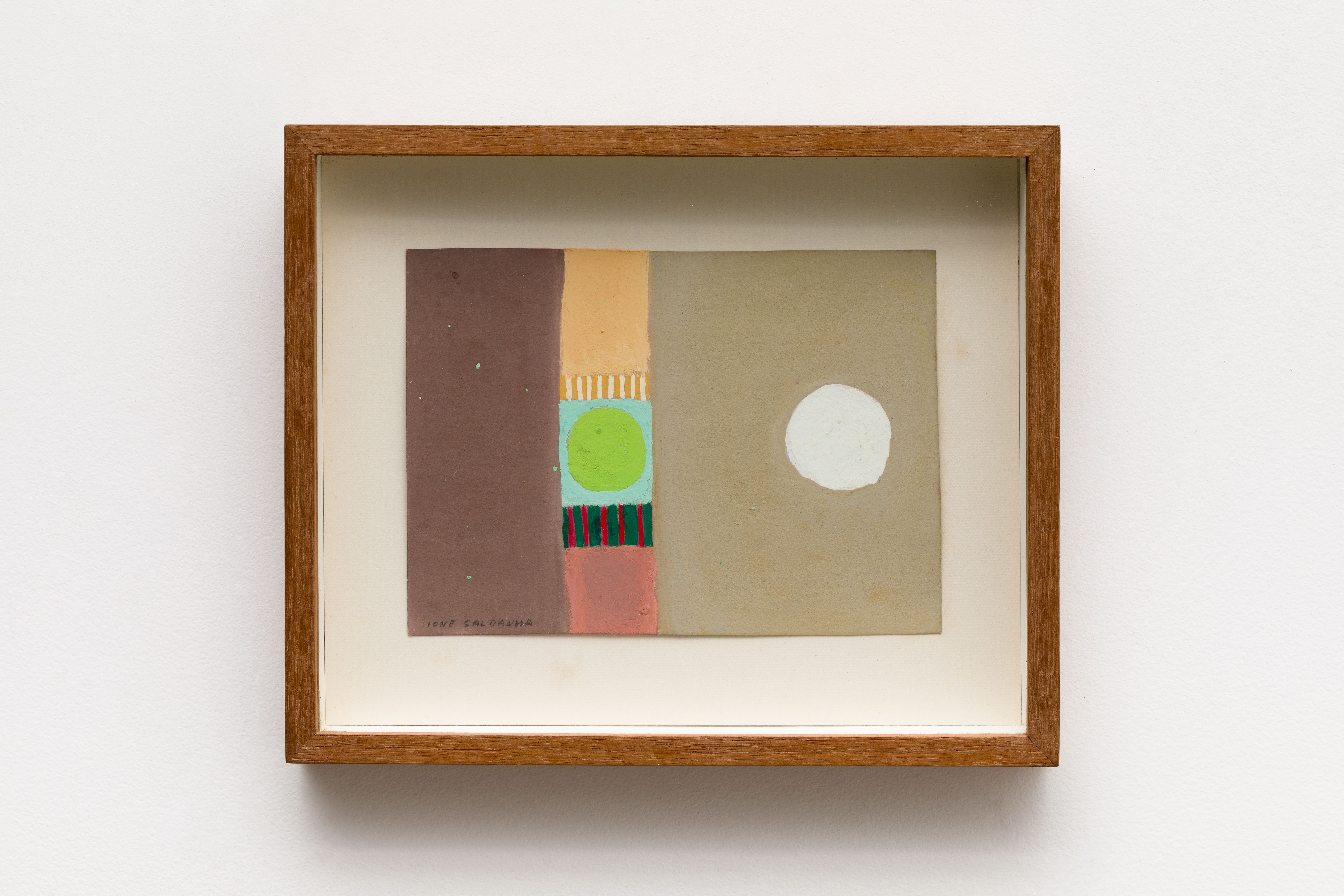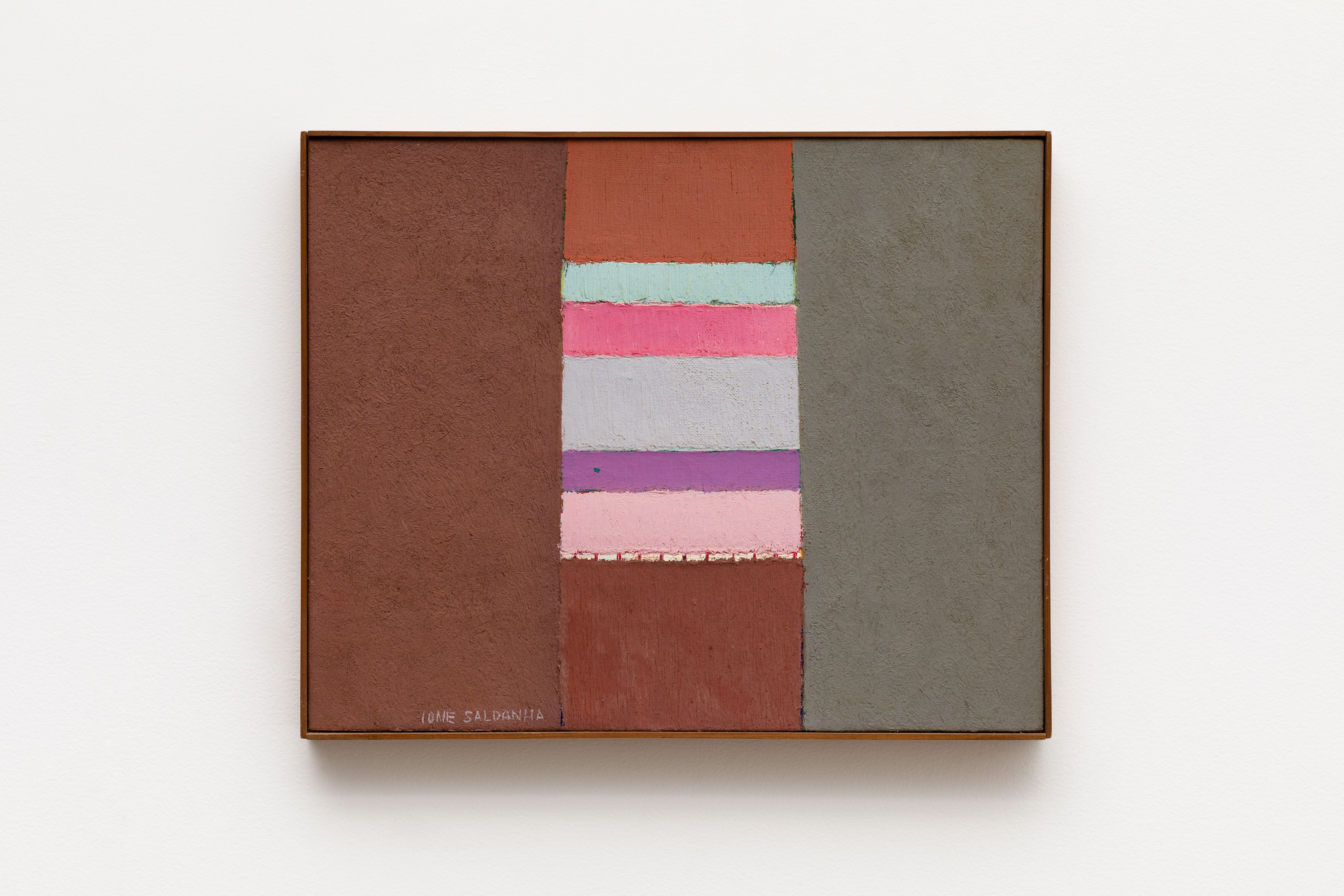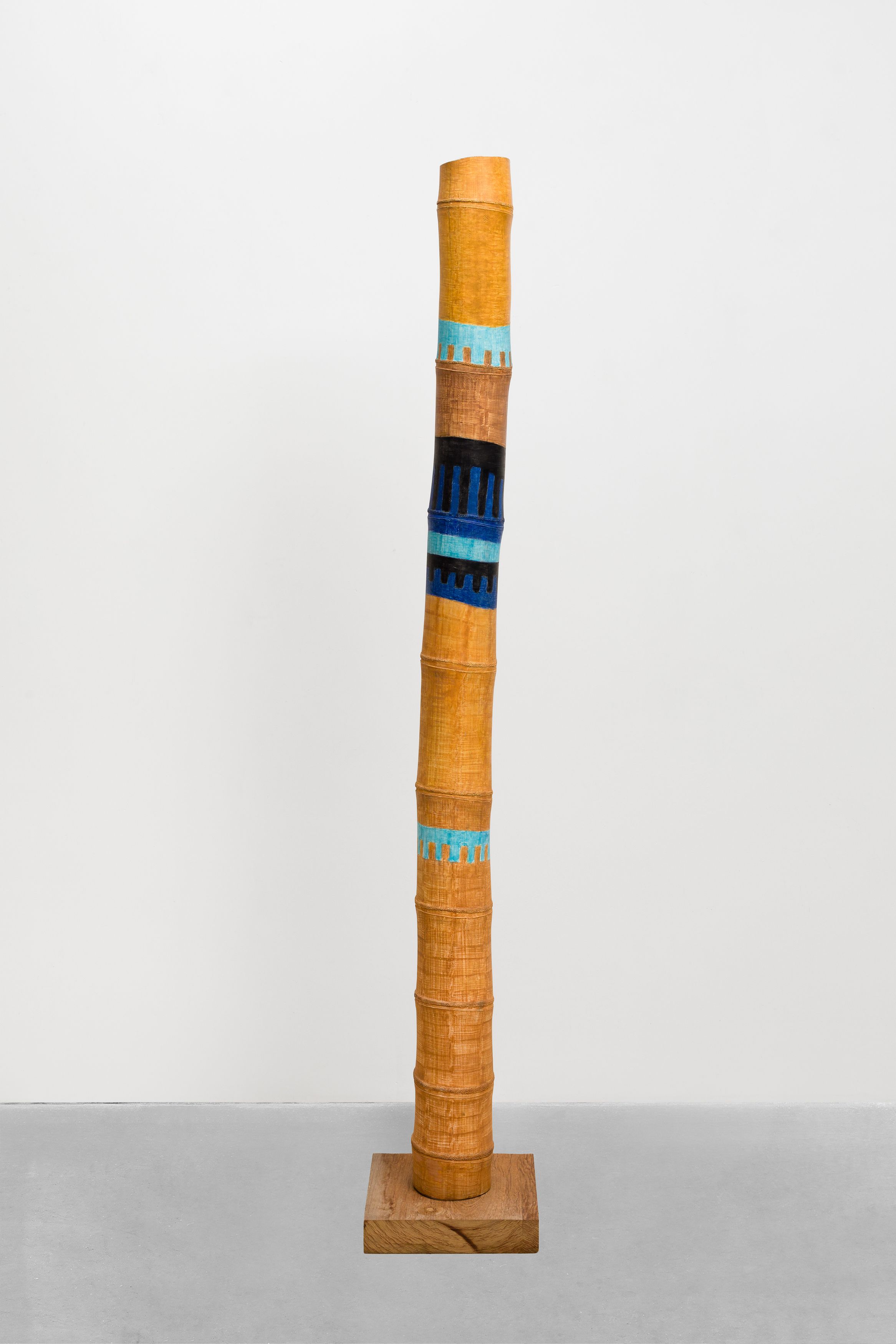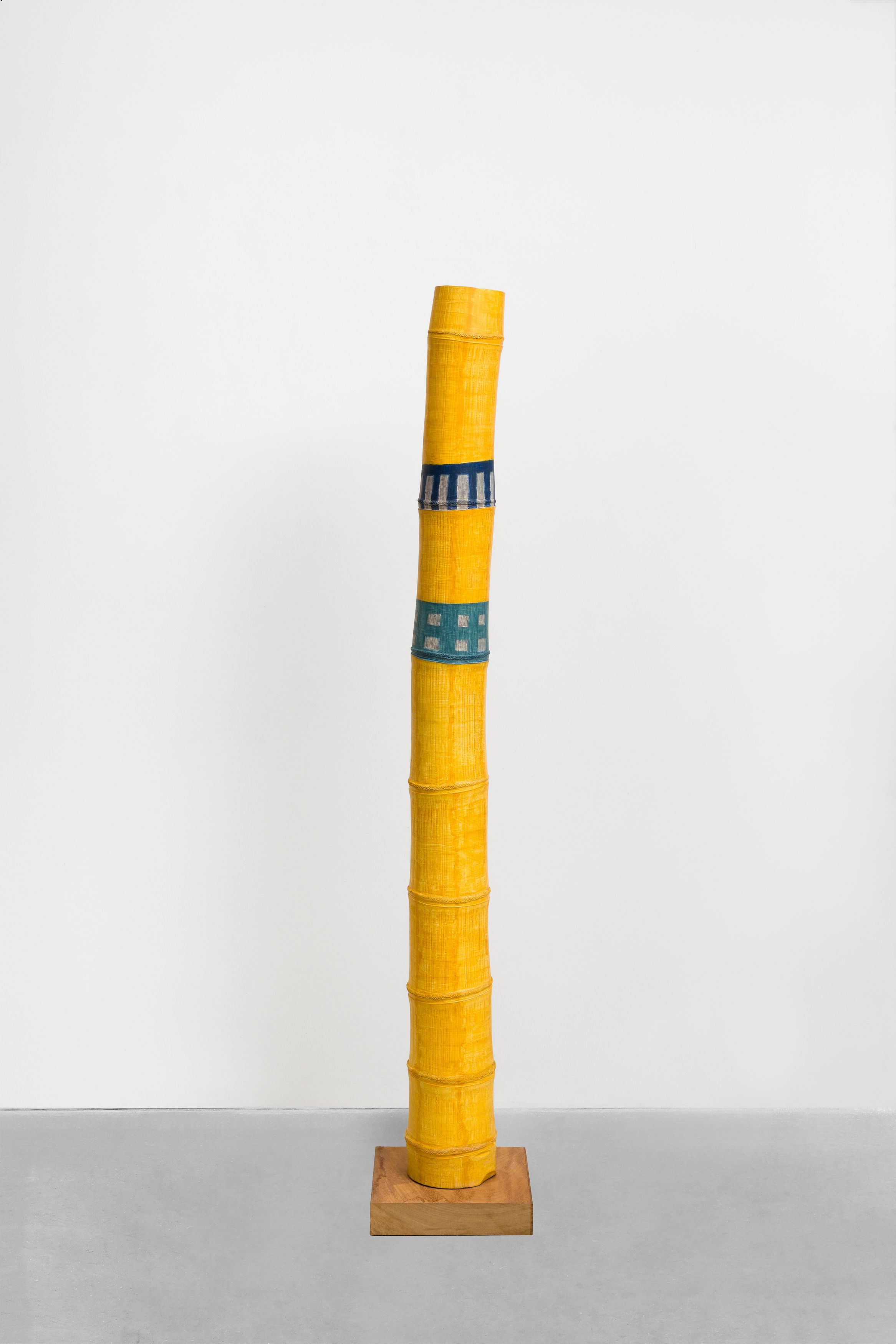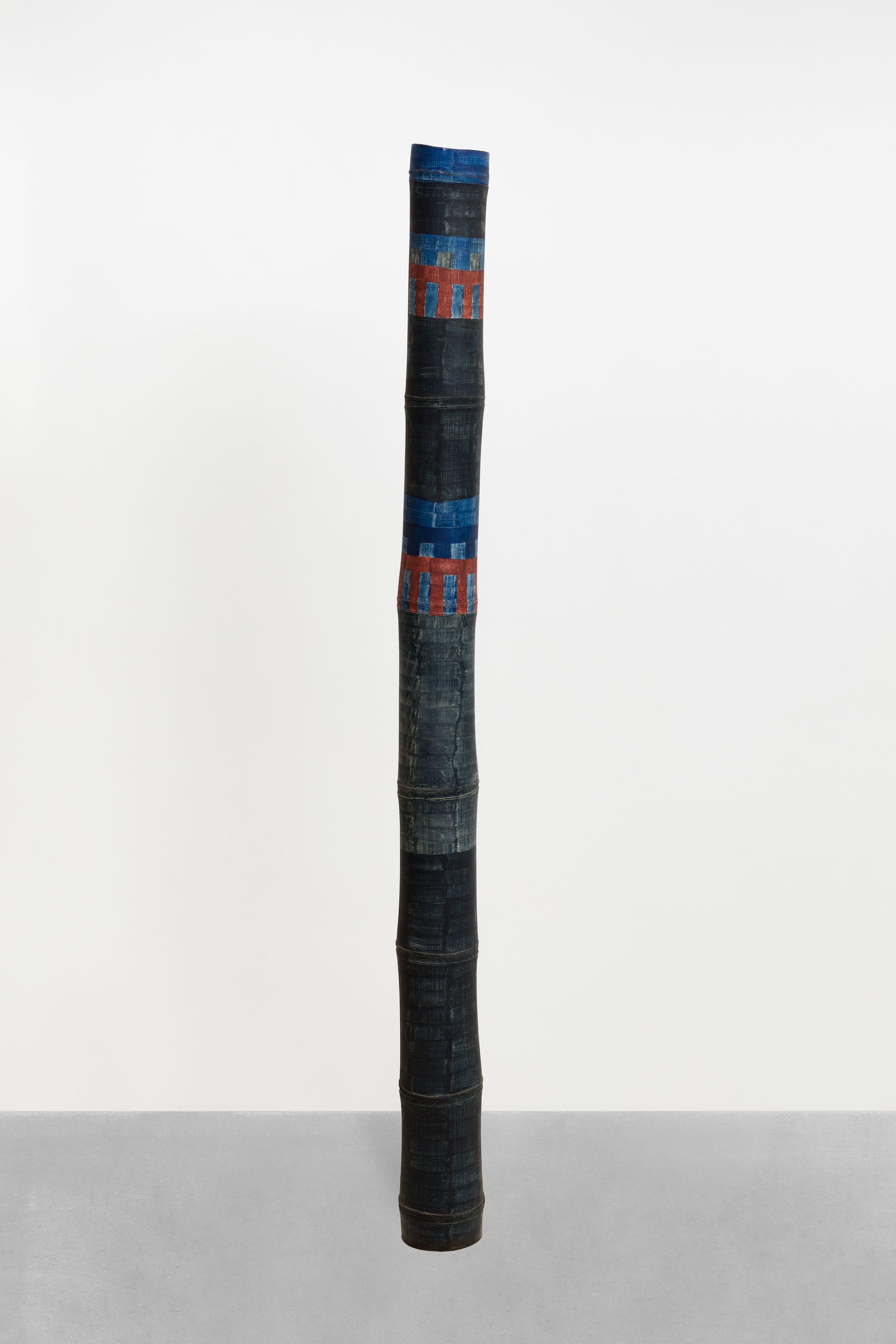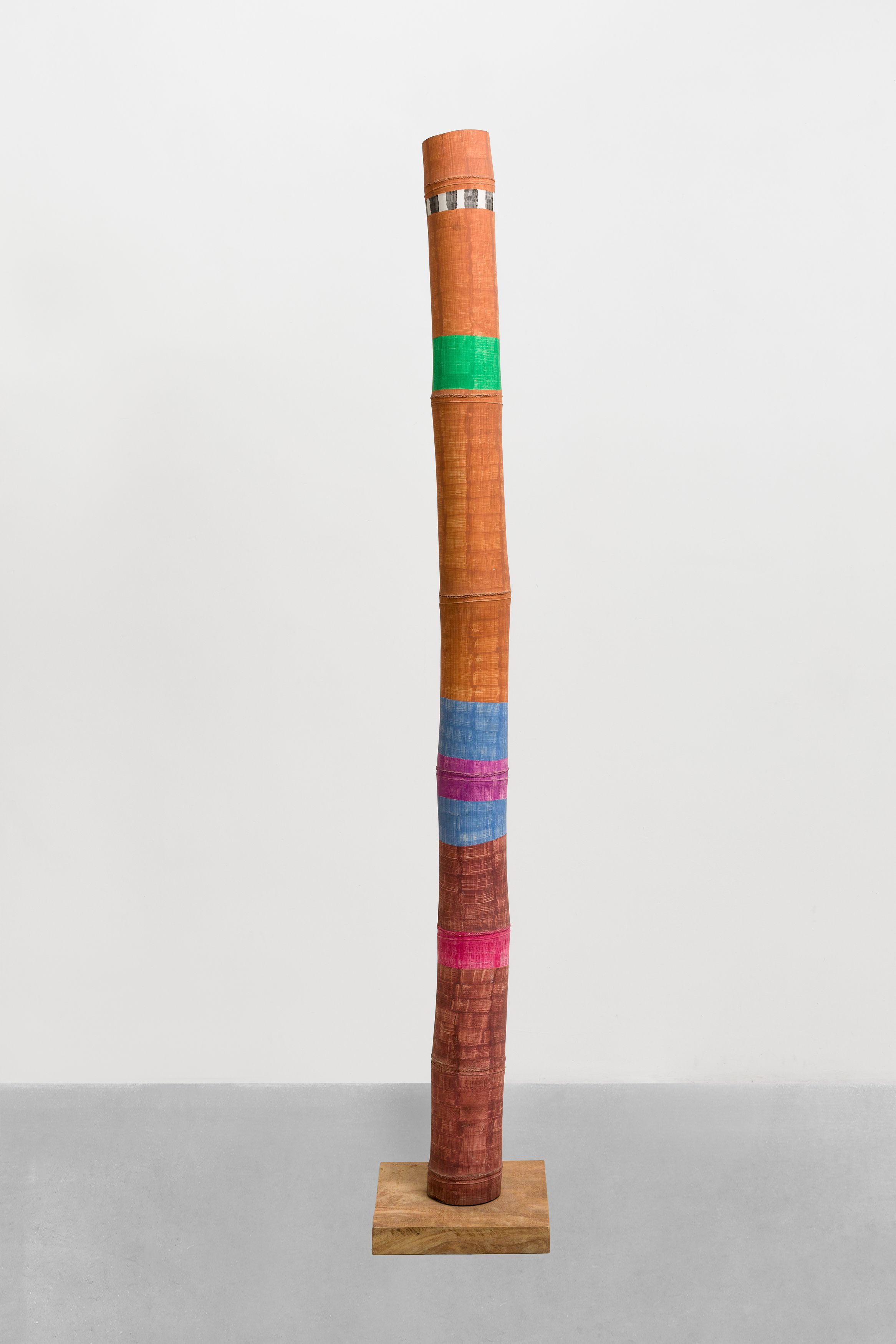Ione Saldanha
Installation Views
Artwork
Pioneering Brazilian modernist Ione Saldanha was born in 1919 in Alegrete, Brazil, near the Uruguayan border. She lived and worked in Rio de Janeiro for seven decades until her passing in 2001. The Time and the Color, the first solo exhibition of her work in the United States, includes paintings from the 1950s to the 1980s, from early cityscapes to experiments in geometric abstraction and later works of absolute abstraction and form that traversed canvases and sculptural bamboo works.
At the forefront of Saldanha's work is a concern with a certain representation of the city—including its inhabitants—and abstract architectonic compositions, constructions, and building elements. Saldanha began painting colonial cities such as Ouro Preto and Salvador, gradually moving into geometric abstraction later in her career. There is rhythm to these constructions, built through color codes and layering. Many of her works do not indicate titles or exact dates; they reference less the outside world than their own placement within her oeuvre—their own sequence, logic, and rhythm—creating an entire language of values and aesthetics.
Abstraction dominated artistic practices during the second half of the twentieth century, as many artists working after World War II sought an international language that could transcend national and regional narratives—and, for women artists, those related to gender. It is necessary to understand the political and social contexts in which most of these works were produced: during a wave of military regimes that haunted South America from the 1960s to the 1990s, when internationalism was an ongoing question. As artists encountered censorship and the impossibility of dedicating themselves solely to explicitly political works, some found in abstraction the possibility of making art in freedom.
Saldanha had a very particular practice that challenged the norms of modern painting. Though she studied in Europe and admired artists like Henri Matisse, her work does not necessarily look at these traditions for inspiration or a common lineage. Rather, her way of relating to color references vernacular cultures and folk art unique to Brazil, such as street games, popular houses, and festivities.
Saldanha’s fundamental interest in color and form is evident in her work from the earliest stages; she envisioned her constructions as ways of relating these elements. She was fully embedded in the visual arts scene of Rio de Janeiro, showing at galleries and museums locally and throughout Brazil, but her references always returned to what she called “popular culture.”
During her time living and working in Brazil, Italian architect Lina Bo Bardi was one of the most important advocates for taking what had been pejoratively deemed “craft” as a reference. Bo Bardi emphasized the need to reconfigure the differences between ancestral and modern knowledge, common and specialized practice:
The word craftsmanship provokes in those who are not clear about the texture of contemporary society and the schemes of modern industrial development and production, a revolt, if not the sense of diminution that can be summarized in the expression: "ancient craftsmanship," "modern-industry,” "inferior-craftsmanship." Today, in reality, we no longer admit these differences.
Bo Bardi provokes a shift in value of what was once simple or minor into something valuable and complete; Saldanha was one of the first artists in her milieu to elucidate the tension between erudite and popular. When she worked with geometric abstract painting on readily available and natural material like bamboo, Saldanha questioned the structure of value, the nature of supports, and the relationship between the material and immaterial. In her practice, Saldanha assigns value to simplicity. By virtue of her exhibition history in modern art museums, galleries, and biennials in Brazil, she was a force in developing both Brazilian modernism and greater visibility of the nation’s production, popular formats, and practices.
The artist followed an intuitive practice, exploring diverse supports for her painting. Though the supports varied—in addition to bambus, there are flat ripas and large, circular spools—she was always a painter, even when engaging with three-dimensional objects as both supports and subjects for studying abstraction and color. “Color is what makes me paint,” she once summarized. She worked mostly with oil until 1967, later experimenting with tempera in a range of color palettes to depict geometric forms. Letting go of the canvas meant renouncing strict traditions that no longer served her practice. Saldanha moved in the direction of simplicity, even precarity.
Saldanha’s bamboo paintings demand an encounter between nature and abstraction. Bamboo is ubiquitous in Brazil, commonly used for vernacular modes of construction, and had for Saldanha a particular intimate memory. Usually exhibited in a group, Saldanha’s bamboo poles allow for a nearly infinite number of color combinations. These works bring us back to the medium’s “artisanal” qualities—not the painting of the art-historical canon, but the painting one might do on the street: a daily labor, a simple act, decorative and meaningful at the same time.
Saldanha’s movement toward the most intuitive and organic act of painting in the expanded field is clear throughout her sixty years of artistic practice. She is a fundamental reference for many generations of artists in Brazil; she tested the limits of painting within and away from the canvas and into new materials common to her territory and landscape. Saldanha provoked the awareness of painting as not only erudite, but popular.
Catarina Duncan
The Time and The Color is organized in collaboration with Simões de Assis, São Paulo.
For additional information on this exhibition, please contact Andrew Blackley (andrew@salon94.com).
CORrespondência e REcorDAÇÕES by Vivian Ostrovsky
"CORrespondência e REcorDAÇÕES" (2013) by filmmaker Vivian Ostrovsky
Press
ARTNews
Artnet
